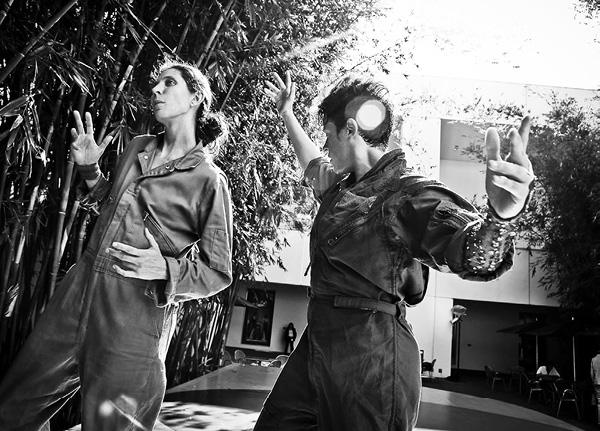
THE OTHER SIDE OF STILLNESS
first performed on March 10, 2014
Pieter, Los Angeles, CA
performed four times in 2014
ALEXX SHILLING / ALEXX MAKES DANCES
Barry Brannum, Alison D’Amato, Sarah Leddy, Ian Isles, Samantha Mohr, Madison Page, Taso Papadakis, Gwynn Shanks, Laurel Tentindo, Devika Wickremesinghe
Los Angeles, CA
472928677m472928677a472928677i472928677l472928677@472928677a472928677l472928677e472928677x472928677x472928677m472928677a472928677k472928677e472928677s472928677d472928677a472928677n472928677c472928677e472928677s472928677.472928677c472928677o472928677m
AlexxMakesDances.com
THE OTHER SIDE OF STILLNESS
ALEXX SHILLING / ALEXX MAKES DANCES
the way dances don’t exist
until the dancers dance them
A REVIVAL
a ritual of revival
“the dance goes on,” Rainbow said when we danced on the Hammer Museum’s Gold Stage.
Does it?
the dance goes on.
sometimes we stop. we rest.
this piece is my attempt at making it go on.
“The Other Side of Stillness” is a collaboratively created, site-specific, durational duet for five or more dancers that never stops moving. In brightly colored jumpsuits and Power accessories, one member of a duet is replaced after fifteen minutes of continuous dancing. At fifteen minute intervals, a new dancer enacts the ritual of replacement, and the dance goes on. This highly physical score utilizes and celebrates the performers’ collective history while exploring endurance, replacement and constancy amidst an ever-shifting environment of spectator, site and time.
“The Other Side of Stillness” is performed for two hours (at its maximum duration). Audience may come and go, may stay. We have performed in public spaces, private studio and theatrical spaces, for the camera, and in intermediate spaces where performance and spectatorship mingle loosely. Each adaptation thoughtfully engages with each context, its challenges, limitations and wonders. With each adaptation, the piece sprouts new layers and plays with loosening or tightening the fifteen minute replacement / two hour durational framework.
We call ourselves the Modern Dancers of America. We recognize the roots of our collective movement material: Lucinda Childs, Trisha Brown, Michael Jackson, Bob Fosse, Bill T. Jones, surface through our dancing, reminding us that we are cellularly engaged with a folk form that our bodies pay regular homage to, while simultaneously innovating.